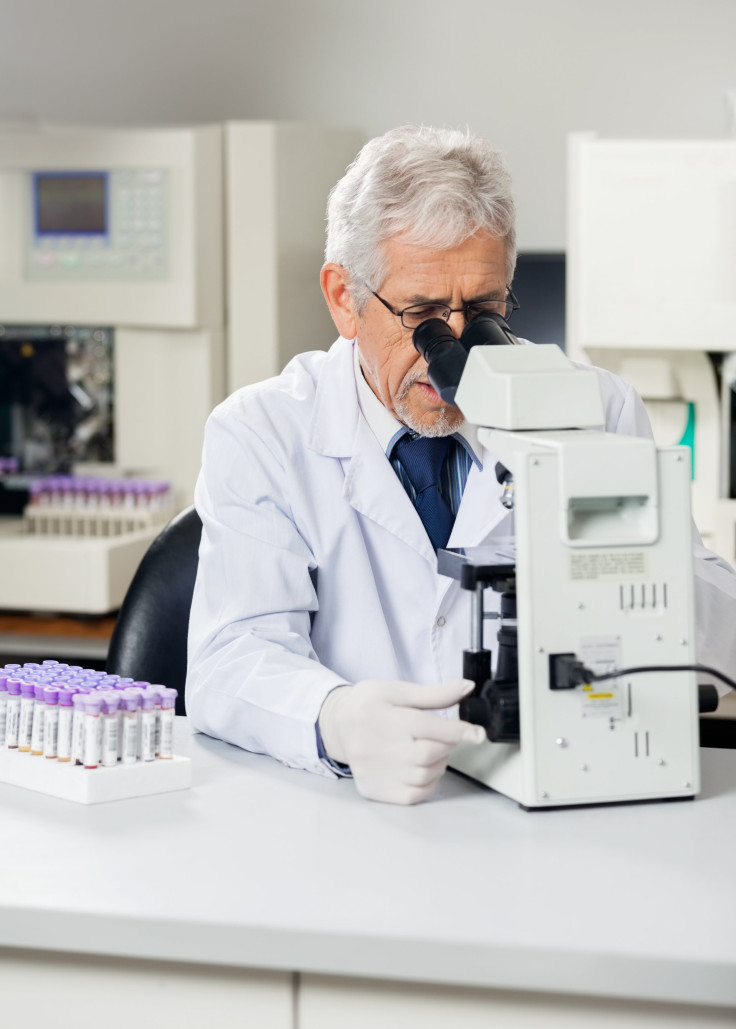Molecular Machines Cruising Inside The Body: Tiny Motors Steer Human Cells Magnetically

Imagine if a patient undergoing surgery could “swallow the surgeon,” an idea first introduced by physicist Richard Feynman in 1959, where doctors could see what is happening inside the body as if they’d been shrunk and placed inside a miniature ship.
This idea has been explored before in science and medicine, and now scientists have come one step closer to making it an effective way to treat disease. Scientists from Penn State University have developed “rocket-shaped” metal motors inside living human cells, which gives them the ability to steer the cells magnetically. It has the potential to lessen many unwanted side effects of drugs, while allowing the medication to do what needs to be done.
For the first time, the scientists were able to place these “nanomotors” into living cells to be studied. Previously, they have only been examined in vitro, meaning in the lab. “As these nanomotors move around and bump into structures inside the cells, the live cells show internal mechanical responses that no one has seen before,” Mallouk said in a press release. “This research is a vivid demonstration that it may be possible to use synthetic nanomotors to study cell biology in new ways.”
Professor Tom Mallouk and his team of researchers recently published their study in the journal Angewandte Chemie International Edition.
The nanomotors were controlled by magnetic forces and ultrasonic power, which could be increased or decreased, and affected the activity of the tiny machines. When the power was increased, the nanomotors began to zoom around and bump into the cell’s interior structures, as “egg beaters” of sorts. Thus, the scientists think they can be used to “treat cancer and other diseases by mechanically manipulating cells from the inside,” Mallouk stated in the press release. He continued, “Nanomotors could perform intracellular surgery and deliver drugs non-invasively to living tissues.”
Another important aspect of their research is that these particular nanomotors were able to move independently of one another. Autonomous motion would allow them to destroy the cells if needed — such as cancer cells.
For their study, the research team used HeLa cells, famous as the immortal line of human cervical cancer cells used in research. HeLa cells were removed from a woman named Henrietta Lacks in 1951, a patient suffering from cancer, and have since been used in scientific research. HeLa cells and the story of the woman from whom they were taken inspired the book, The Immortal Life of Henrietta Lacks.
The development of nanomotors have come a long way in the past decade, as initially scientists weren’t able to get them to work in human cells due to the toxic fuels that were needed to power them. Instead, ultrasonic waves this time around gave them the chance to insert them into human cells. However, being able to treat diseases with this process is still a long way off.
“One dream application of ours is Fantastic Voyage-style medicine, where nanomotors would cruise around inside the body, communicating with each other and performing various kinds of diagnoses and therapy,” Mallouk said in the press release. “There are lots of applications for controlling particles on this small scale.”
Source: Wei Wang, Sixing Li, Lamar Mair, Suzanne Ahmed, Tony Jun Huang, Thomas E. Mallouk. Acoustic Propulsion of Nanorod Motors Inside Living Cells. Angewandte Chemie International Edition, 2014



























